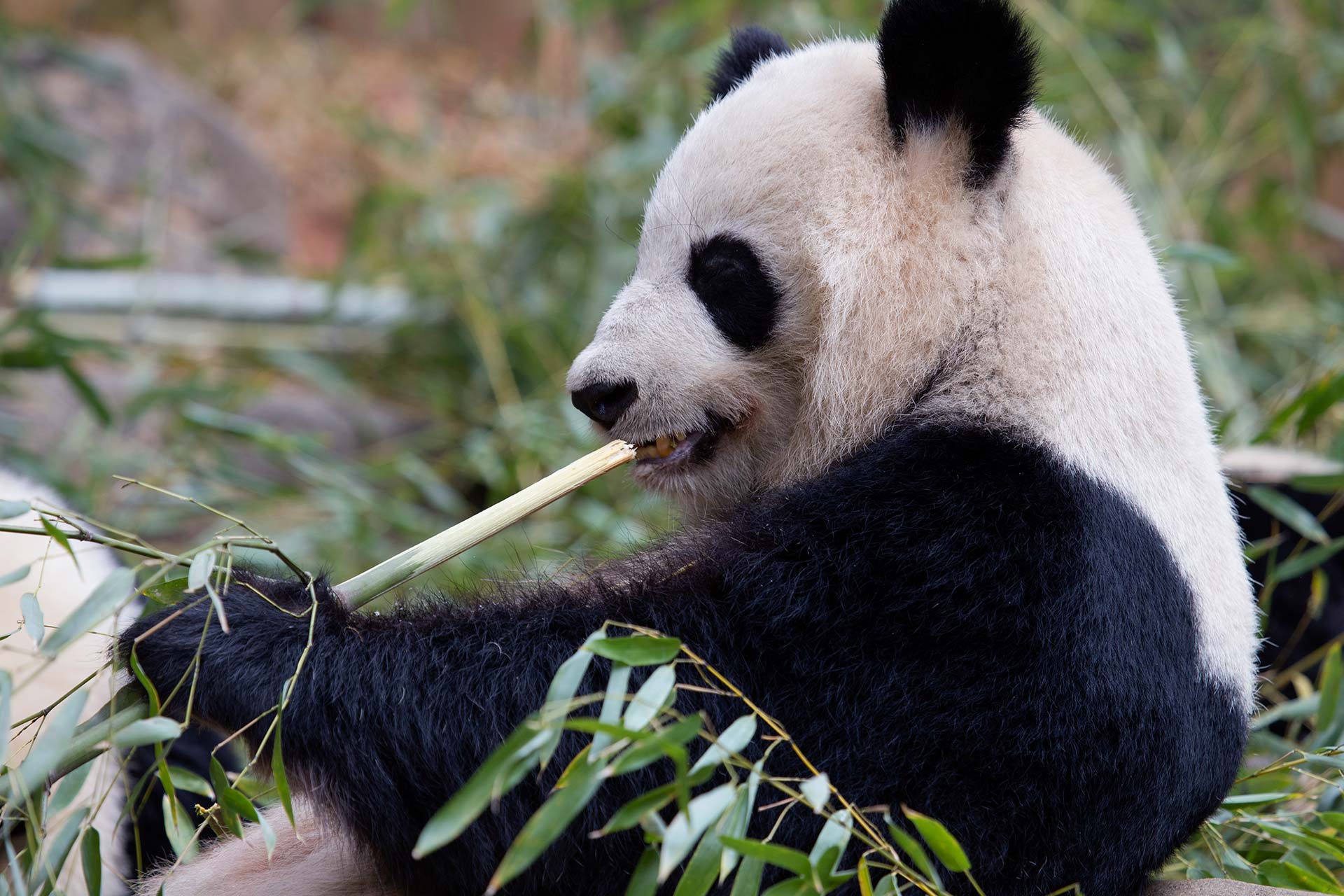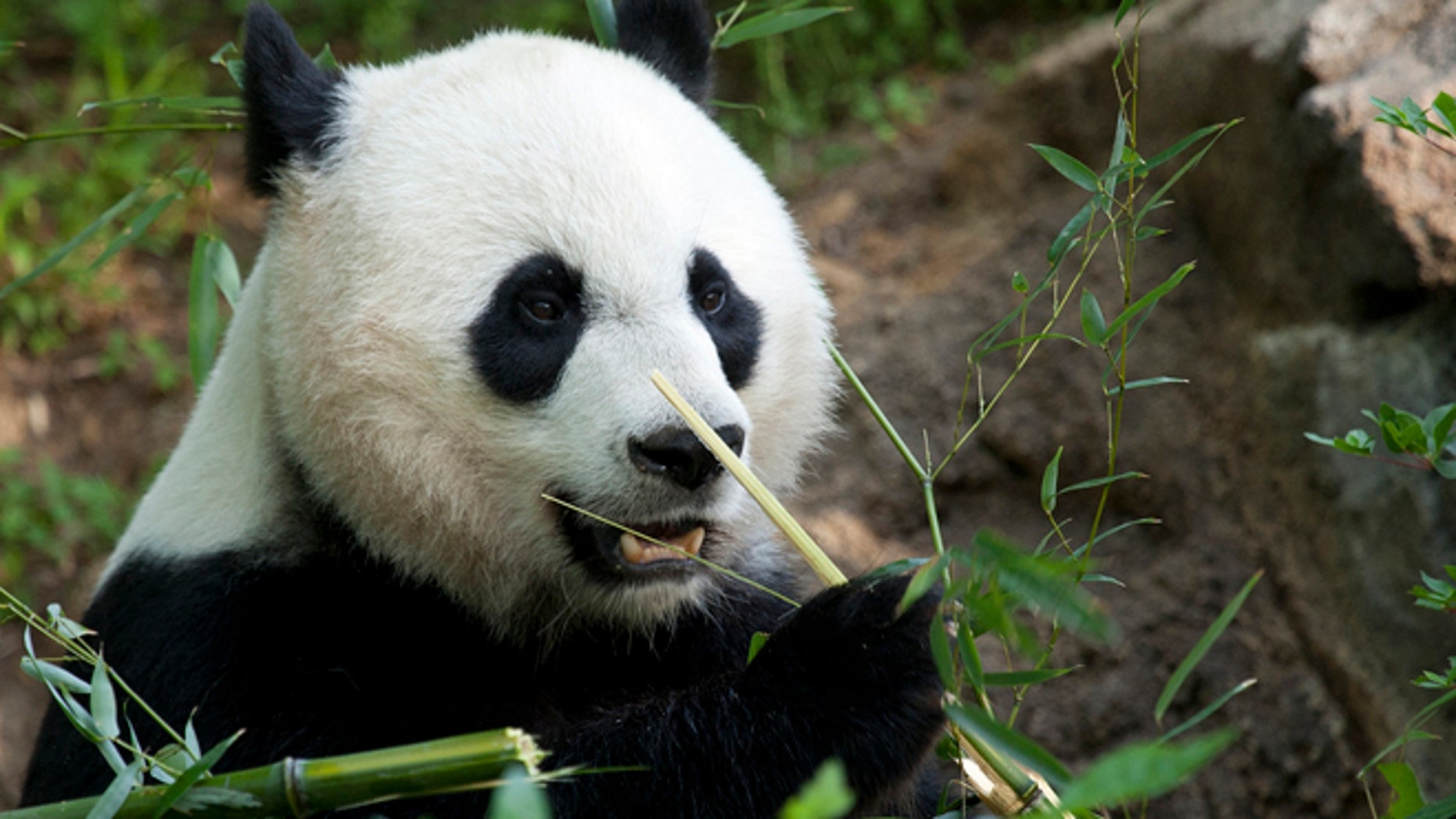
Their playful and clumsy nature makes them adorable stars in viral videos, while their diet of bamboo and movement through the forests makes giant pandas essential to their ecosystem.įound only in the temperate mountain forests of southwest China, giant pandas ( Ailuropoda melanoleuca) are also known as panda bears or simply pandas. Known best for their black and white coat and rotund body, giant pandas are revered by the world and considered a national treasure in China.
#Giant panda series
This article was updated on March 15, 2019, by Live Science Contributor Rachel Ross.One Earth’s “Species of the Week” series highlights the flagship species of each of the 844 unique ecoregions contained within Earth’s bioregions.

This is an improvement compared to the giant panda's status in the 1980s, when they were listed as rare by the IUCN. The International Union for Conservation of Nature and Natural Resources (IUCN) categorizes giant pandas as vulnerable. (Image credit: Fuwen Wei) Conservation status Pandas can survive on a bamboo diet because, like the three-toed sloth, they have a low metabolism. The cubs are completely blind for about 50 to 60 days and begin crawling at about 10 weeks of age. Females give birth to one or two cubs (although the second cub usually doesn't survive) that only weigh 3 to 5 ounces (85 to 142 grams) and are about the size of a stick of butter, according to the San Diego Zoo. The average gestation time is 135 days, but ranges between 100 and 180 days. However, in giant pandas, it is S-shaped and directed backward, according to the Animal Diversity Web. In most bears, it is straight and directed forward. Male pandas, like many other mammals (but not humans) have a baculum, a bony rod in the soft tissue of the penis. Males will use their sensitive smelling ability to sniff out a female when ready to mate. The only time that giant pandas seek each other out is during their spring mating season. Other giant pandas can likely tell the sex, age, reproductive condition, social status and more by sniffing the potent marker, according to the San Diego Zoo. To mark their territory, giant pandas secrete a waxy scent marker from a scent gland underneath their tail. On average, a giant panda's territory is about 1.9 square miles (5 square kilometers).

If they do come in contact with one another they'll growl, swat and bite each other until one gives up and leaves. They dislike being around other pandas so much that they have a heightened sense of smell that lets them know when another panda is nearby so it can be avoided, according to the National Geographic. (Image credit: dominiqueb/Flickr) Panda lifeįor the most part, giant pandas are loners. Sometimes there isn't enough bamboo around to sustain the large bears, so giant pandas will occasionally supplement their bamboo-diet with rodents, fish, insects or birds. In the summer, giant pandas will climb 13,000 feet (3,962 m) up the mountains of their home area to feed, according to the National Geographic. In order to get a variety of nutrients, pandas eat various parts of the bamboo plant and will seek out bamboo that's sprouting new shoots and leaves (the young shoots and leaves contain higher amounts of nutrients, including calcium, nitrogen and phosphorous) at different times of the year. They use their pseudo-thumb to hold and manipulate the bamboo.īamboo is relatively low in nutrients, which is why pandas have to eat so much of it. Giant pandas have a special bone that extends from their wrists called a "pseudo-thumb," according to the San Diego Zoo. (12.5 kg) of bamboo each day, according to National Geographic (opens in new tab).

They eat bamboo 12 hours a day, which adds up to 28 lbs. A giant panda's appetite for bamboo is insatiable.


 0 kommentar(er)
0 kommentar(er)
